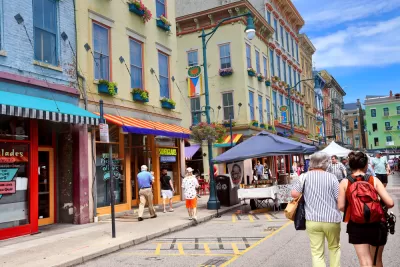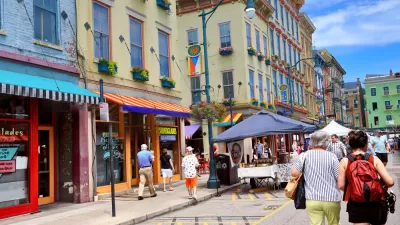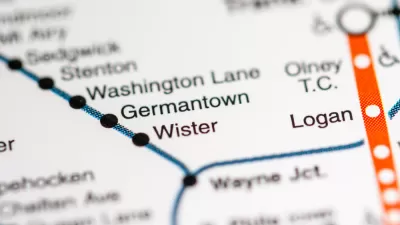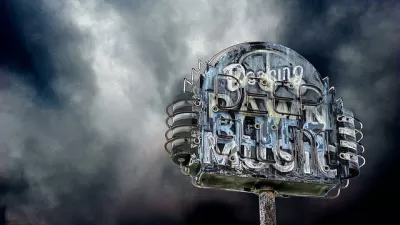The story is similar in Washington, D.C., Philadelphia, Los Angeles, Miami, Cincinnati, and Boston: scenes of widespread destruction—the fires, looting, and property damage of civil unrest—sow the seeds for redevelopment and gentrification.

Emily Badger and Quoctrung Bui report on a story familiar in cities around the United States, where "high-end development rises directly on top of Black neighborhoods that suffered the greatest damage during civil unrest decades ago."
"The sheer scale of harm to Black neighborhoods — from the conditions that led to unrest, from the buildings that burned then, from the years of neglect that followed — made it easier, when the time finally came years later, for developers and new businesses and residents to amass wealth," explain Badger and Bui.
"Many of these neighborhoods had bargain real estate, but also grand old housing stock, close to downtown, close to transit, with built-in commercial corridors. They also had vacant land and city-owned lots that could be assembled into larger developments."
The article drills down into geographic and historical specifics for examples from a number of U.S. cities, acknowledging that not all neighborhoods that have faced destruction and disinvestment meet the same fate, but for those that do, the history of violence is directly connected to the realities of contemporary gentrification.
Back in June 2016, Colin Woodard provided in-depth analysis of the example from Cincinnati cited by Badger and Bui—the neighborhood of Over-the-Rhine, scene of civil unrest in 2001 that is now one of the Midwest's most prominent examples of "urban revitalization."
FULL STORY: Riots Long Ago, Luxury Living Today

Study: Maui’s Plan to Convert Vacation Rentals to Long-Term Housing Could Cause Nearly $1 Billion Economic Loss
The plan would reduce visitor accommodation by 25,% resulting in 1,900 jobs lost.

Alabama: Trump Terminates Settlements for Black Communities Harmed By Raw Sewage
Trump deemed the landmark civil rights agreement “illegal DEI and environmental justice policy.”

North Texas Transit Leaders Tout Benefits of TOD for Growing Region
At a summit focused on transit-oriented development, policymakers discussed how North Texas’ expanded light rail system can serve as a tool for economic growth.

How Community Science Connects People, Parks, and Biodiversity
Community science engages people of all backgrounds in documenting local biodiversity, strengthening connections to nature, and contributing to global efforts like the City Nature Challenge to build a more inclusive and resilient future.

Alabama: Trump Terminates Settlements for Black Communities Harmed By Raw Sewage
Trump deemed the landmark civil rights agreement “illegal DEI and environmental justice policy.”

Dear Tesla Driver: “It’s not You, It’s Him.”
Amidst a booming bumper sticker industry, one writer offers solace to those asking, “Does this car make me look fascist?”
Urban Design for Planners 1: Software Tools
This six-course series explores essential urban design concepts using open source software and equips planners with the tools they need to participate fully in the urban design process.
Planning for Universal Design
Learn the tools for implementing Universal Design in planning regulations.
City of Santa Clarita
Ascent Environmental
Institute for Housing and Urban Development Studies (IHS)
City of Grandview
Harvard GSD Executive Education
Toledo-Lucas County Plan Commissions
Salt Lake City
NYU Wagner Graduate School of Public Service




























